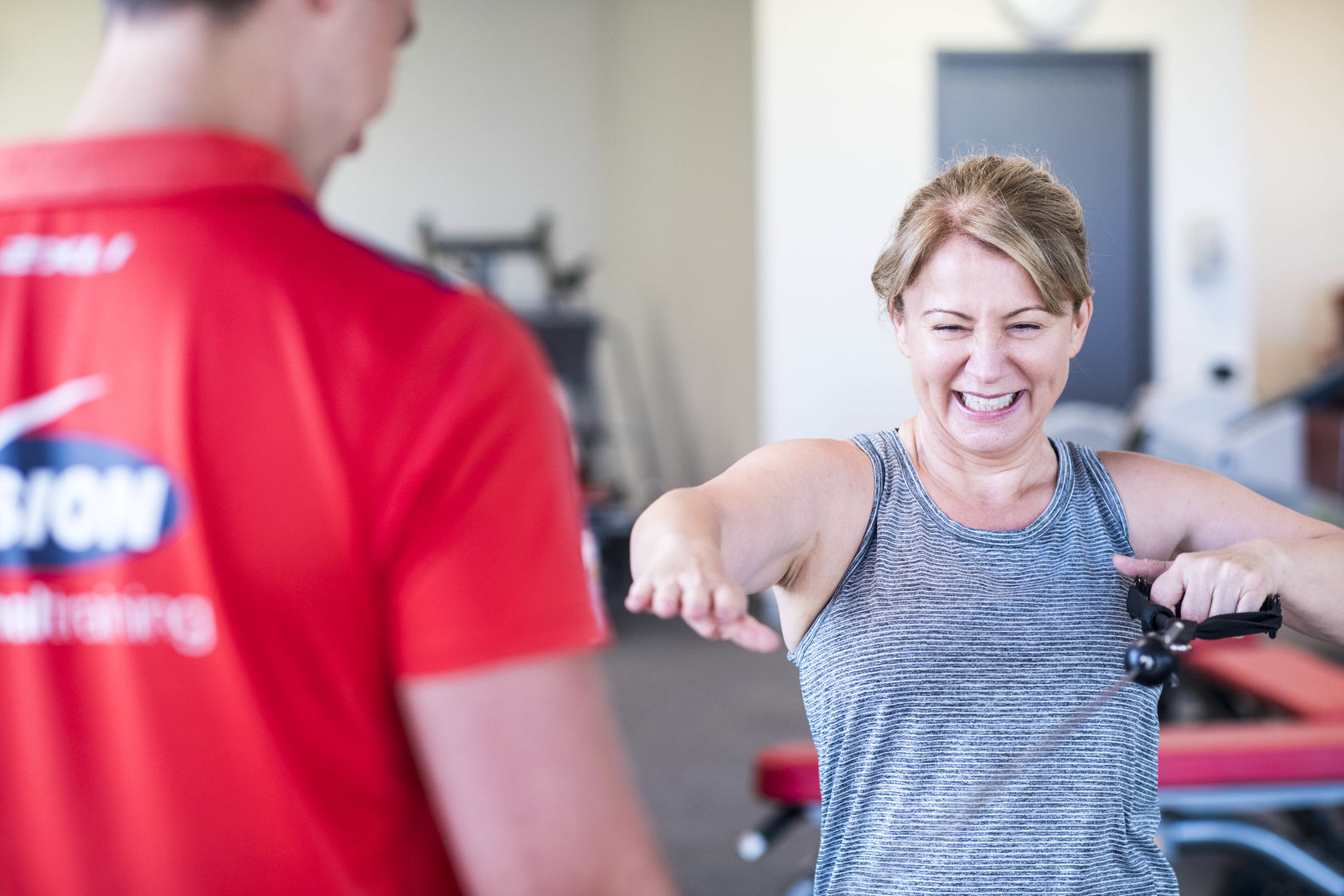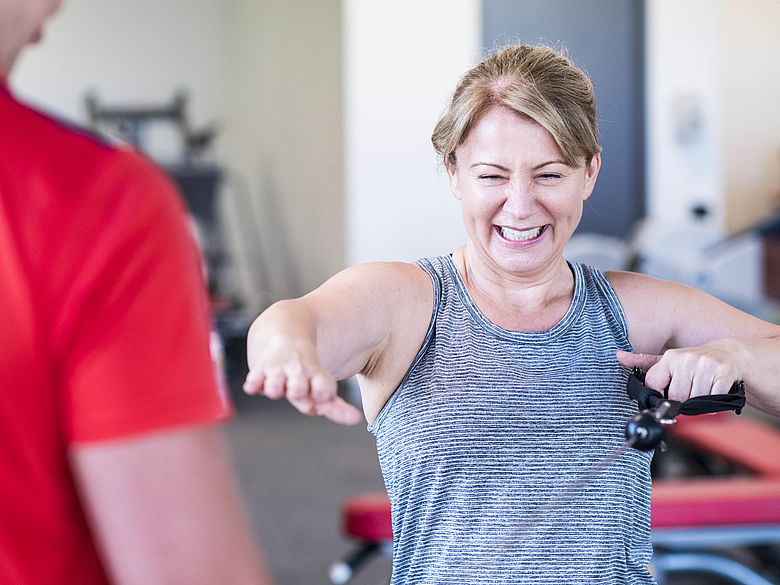'I don't run'
A statement I hear all too often by friends, clients and even fellow fitness professionals. But we all know the scenario too well - what do you think happens as soon as a parent loses their child in a shopping centre? Or at the Easter show? The primal instinct comes out! The problem with that original statement is that the human body is designed to run. Hundreds of years ago, the hunter-gatherer nature of our existence forced the human species to utilise our niche ability to sweat. Humans are not built for speed, but built for endurance. You see the top speed of a white tailed deer for example is around the 75km/h mark, which even if you threw Usain Bolt out into the wilderness, would leave him in the dust as he clocks up a measly speed of 44km/h. So if we couldn't outpace our prey, we'd have to be able to outlast it.
In order to sprint at a top speed, a deers muscle mass and fast twitch fibres would have to be working over time. But without sweat glands, the only way to cool the body down is to physically stop using those muscles, wait in the shade under a tree and increase the respiratory rate. After a short period of time the deer is able to take off again, all the while the human trundles after it at a slower pace. But as his body heats up, his thousands of sweat glands kick in and keep his body temperature at a level that can be maintained for up to four hours at a time (the lack of fur also helps to dissipate the heat quickly). The deers only option is to sprint and stop, sprint and stop - CAN YOU IMAGINE DOING THAT FOR FOUR HOURS! Eventually the deer collapses from heat exhaustion and Usain captures the prize (as per usual!).
Now that we've clarified that we are literally born to run, let's try to understand some simple methodologies that will help us to re-connect with our ancestral ability
1) Beginners run too fast - try jogging
Most people who are taking up running from a lengthy break (yes, I'm talking about that period of time between the primary school recess playground and the first steps on a treadmill) smash the button on the treadmill up to a speed that feels like a comfortable run - the problem is that our energy system responsible for the first 10 seconds (Phosphate system) runs out very quickly and then switches to our Lactic System which lasts up to about 1-2 minutes. The Lactic Acid builds up and is needed to be recycled with oxygen - this takes time - generally too much time and force the beginner runner to slow down or walk in order to recover and fully recycle the energy waste.
Tip: JOG - SLOWLY. Start out a low pace of 7-8km/h and start with a 1:4 minute ratio, slowly levelling it out over the coming weeks until you can comfortably leave it at that pace for a good 10 minutes. As the weeks role by, slowly increase that time period or speed and your recycling system (cardiovascular system) will slowly improve.
2) Locomotor-respiratory coupling (BREATHING WHILE RUNNING!)
Could you imagine an Olympic swimmer trying to take a breath every second stroke, then third, then fourth, then back to second.. There would be no rhythm! It's the same when we're running - during exercise, especially while running, the need for oxygen increases. Running might appear to be a low-impact sport, but every time your foot hits the ground, you rock your joints with a force equal to more than twice your body weight. This stress is compounded at the start of each exhale. When you breathe out, your diaphragm and the muscles around it relax, reducing core stability. The less stable it is, the greater your risk of injury all over.
So increased need for oxygen, greater stress on your joints, core de-stabilising. Without rhythm, all of these can feel like multiple miss-timed blows from a sparring partner! So how do we reduce these stresses so that we can not only last longer, but increase our speed, recovery and rhythm?
Beginners: Aim for a simple 2:2 ratio where you'll inhale every two steps and exhale every two steps on the same foot. This will build your rhythm and timing, giving you the opportunity to last longer. Change every 5 minutes or so in order to load different sides of your body.
Intermediate to advanced: For those running for a longer period of time than the average beginner, it can become a problem to only exhale on the one sidep. It becomes similar to keeping your school bag loaded with books on the one shoulder for hours at a time. So we need to alternate at a 3:2 ratio. 3 strides to inhale, 2 to exhale.
Practice on the floor first
1. Lie on your back with your knees bent and feet flat on the floor.
2. Place your hand on your belly and make sure that you are belly breathing.
3. Breathe through your nose and your mouth.
4. Inhale to the count of 3 and exhale to the count of 2. You might count it this way: "in-2-3," "out-2," "in-2-3," "out-2," and so forth.
5. Concentrate on a continuous breath as you inhale over the 3 counts and a continuous breath as you exhale.
6. Once you become comfortable with the inhale/exhale pattern, add foot taps to mimic walking steps.
When you feel confident that you have the 3:2 pattern down, take it for a walk. Inhale for three steps, exhale for two, inhale for three steps, exhale for two. Finally, of course, try out your rhythmic breathing on a run-inhaling for three footstrikes and exhaling for two. A few key points: Inhale and exhale smoothly and continuously through both your nose and mouth at the same time. If it seems difficult to inhale over the full three strides, either inhale more gradually or pick up your pace. And lastly, do not listen to music while learning to breathe rhythmically. The beats of the music will confuse the heck out of you.
3) Train your brain.
People ask me all the time if I 'enjoy' running. The truth is, it's not often about the running anymore. It's all about enjoying the benefits that come with it. Because running is now an autonomous skill (something you're body can automatically do without consciously thinking about) I can use it as an escape, an opportunity to think or relax and concentrate on so many other things than the burning in my lungs, thumping of my feet, impact on my knees, hips etc. It would be similar to how a lot of people drive - have you ever been on such a train of thought that all of a sudden you've found yourself 5kms down the road and on your route to work even though it's a Sunday? You're body autonomously used the blinker, pressed the brake or accelerator, turned the steering wheel etc. but this only comes from hours and hours of practice. Imagine if you practiced driving for 4 minutes a week? This is how long some of us practice running and expect to all of a sudden 'enjoy' it. Beginners are generally in the cognitive stage of skill acquisition and have the burning of the lungs and impact on knees and hips at the forefront of their mind.
After a few weeks though, you'll begin to believe that the whole idea of an exercise high is not a myth. But, it can be hard to get out the door at first. And relying on willpower alone just won't work. Make a plan. Listen to certain music, pick the most convenient time to work out and pick some rewards that will motivate you to just get up and go. Write out a plan and write it where you can see it, like the bathroom mirror.
If the best time to run is the morning, make sure you've got an energizing music mix to listen to, and a relaxing hot shower to look forward to after you're done. Create a prerun routine to cue your body and mind that it's time to go, and repeat it every time you go. Try to get out at the same time of day. Put your workout clothes next to your bed. Put on the same workout music before you go out. Right after your workout, treat yourself to something you genuinely enjoy - like a hot shower, or a smoothie- so your brain associates exercise with an immediate reward.
In summary, we are absolutely born to run and although it may take time, planning and a little bit of impact, you can absolutely go from newbie to natural.
*Disclaimer: Individual results vary based on agreed goals. Click here for details.

